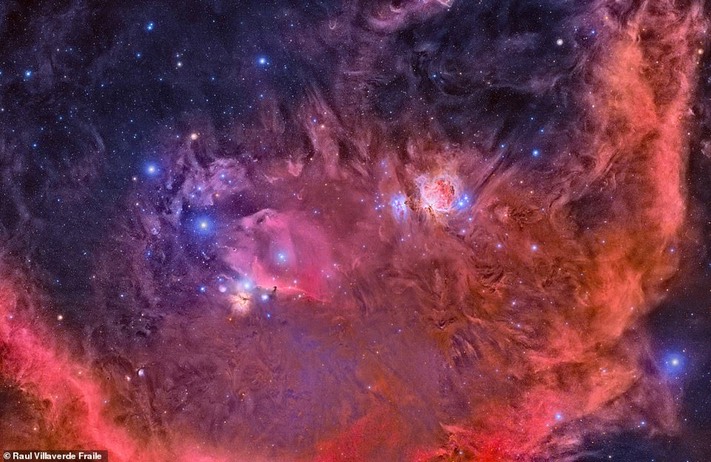
This image, taken by Raul Villaverde Fraile in Ocentejo in Spain, depicts several of the most photographed and mesmerising astronomical objects, from the famous Orion Nebula (M 42) to the Horsehead Nebula (IC 434). In the lower left we also see the reflection nebula M 78, also known as NGC 2068. The surrounding ring is the emission nebula known as Barnard's Loop. This is a mosaic of 9 photographs and a combination of RGB and H-alpha.
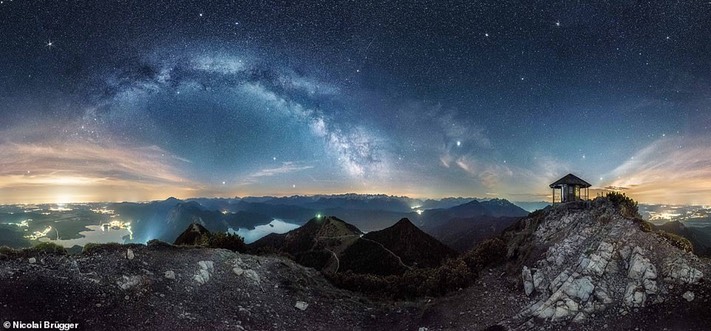
The spectacular Milky Way over the picturesque Bavarian mountain, Herzogstand. The photographer Nicolai Brugger often hikes up this mountain, mostly to observe the Milky Way. The image also depicts a beautiful glow over the horizon, the lakes Walchensee and Kochelsee on the left side and a tiny cabin on the right side.
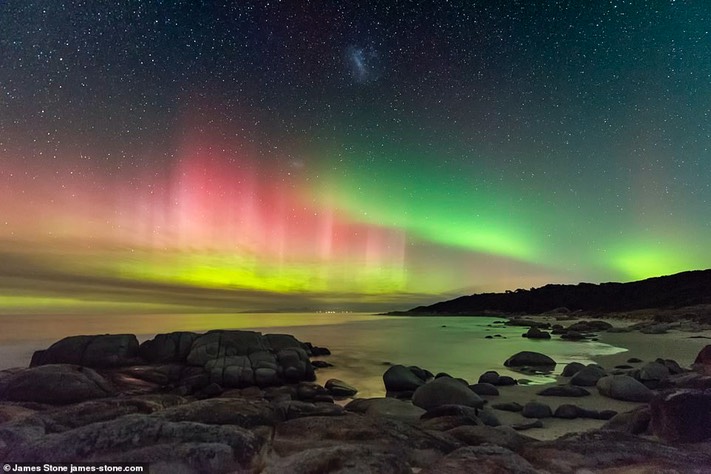
James Stone took this picture of the Southern Lights from Beerbarrel beach in Tasmania, Australia. The Large Magellanic Cloud also appears at the top centre of the image. Deserted beaches and minimal light pollution make Tasmania an ideal place to photograph the night sky, even more so when the aurora comes out to play.
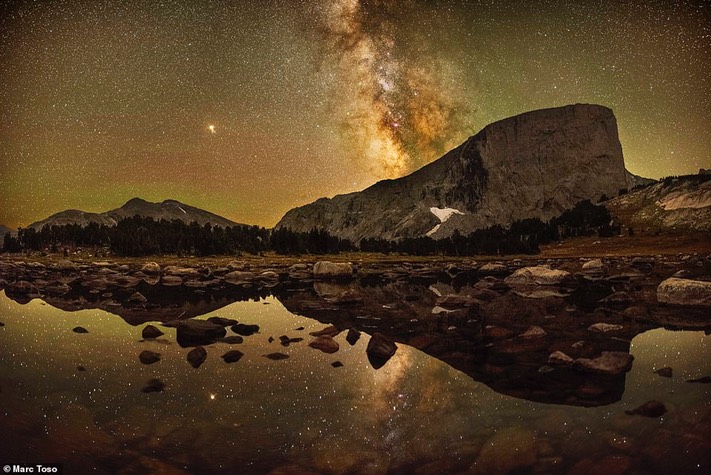
The starry night can be seen above Mount Hooker in Wyoming and below it in the reflection on the river below in this photograph by Marc Toso. On his website, he says of his work: 'Photographing these elusive landscapes is a way of entering timelessness, a way of experiencing these forgotten places in their greatest context, a context shared by all humans—we are but momentary flashes of awareness on a tiny ball in a vast universe’.
Webmaster comment: Yet the Creator chose to come here, and be a human, and die for us, so we could share this spectacular unviverse with Him.
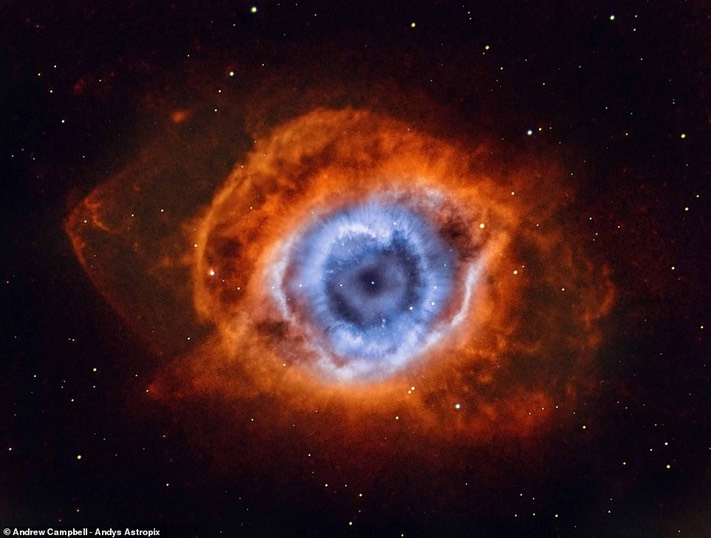
Andrew Campbell took this shot of the Helix Nebula, or NGC 7293, in Melbourne, Australia. Webmaster comment: It is also referred to as “The Eye of God”.
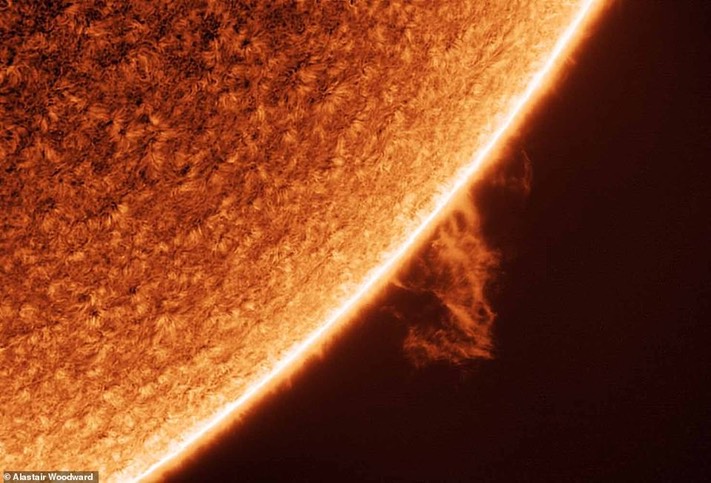
Alastair Woodward took this incredible photograph of a solar prominence, a gaseous feature coming from the Sun's surface, from his back garden in Derby. He entitled the beautiful snap 'Out on a limb'. The photographer inverted the image during processing to show both the prominence and details of the chromosphere.
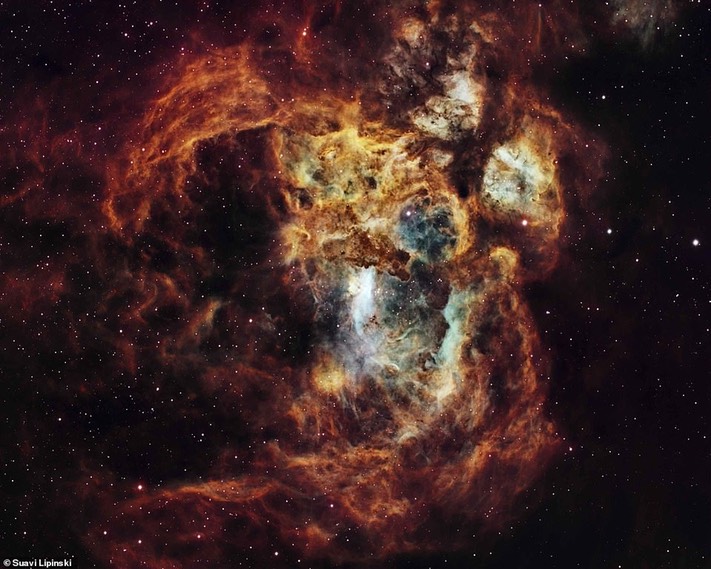
Suavi Lipinski, from Paddington in Brisbane, Australia, took this stunning snap of NGC 6357, also known as the Lobster nebula for its resemblance to a pincer claw. It spans about 400 light years and lies about 8,000 light years away from the Earth, toward the constellation of the Scorpion.
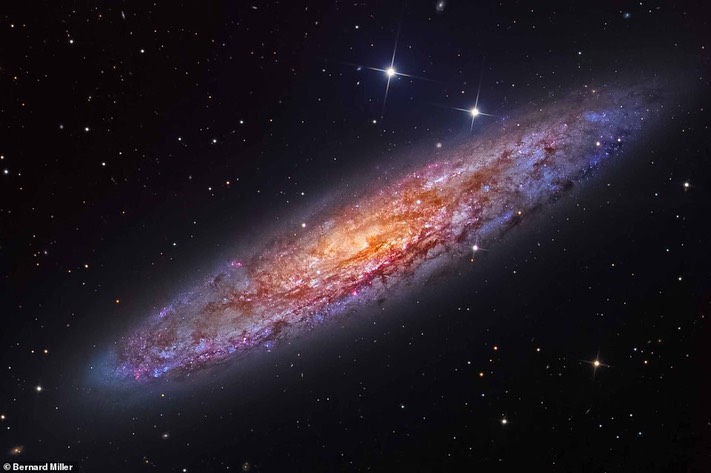
Bernard Miller took this picture of NGC 253, also known as the Sculptor Galaxy. It is a spiral galaxy about 11 million light years away in the constellation Sculptor. It is a starburst galaxy, which means it undergoes periods of intense star formation and is the largest galaxy in a group of galaxies called the Sculptor Group.
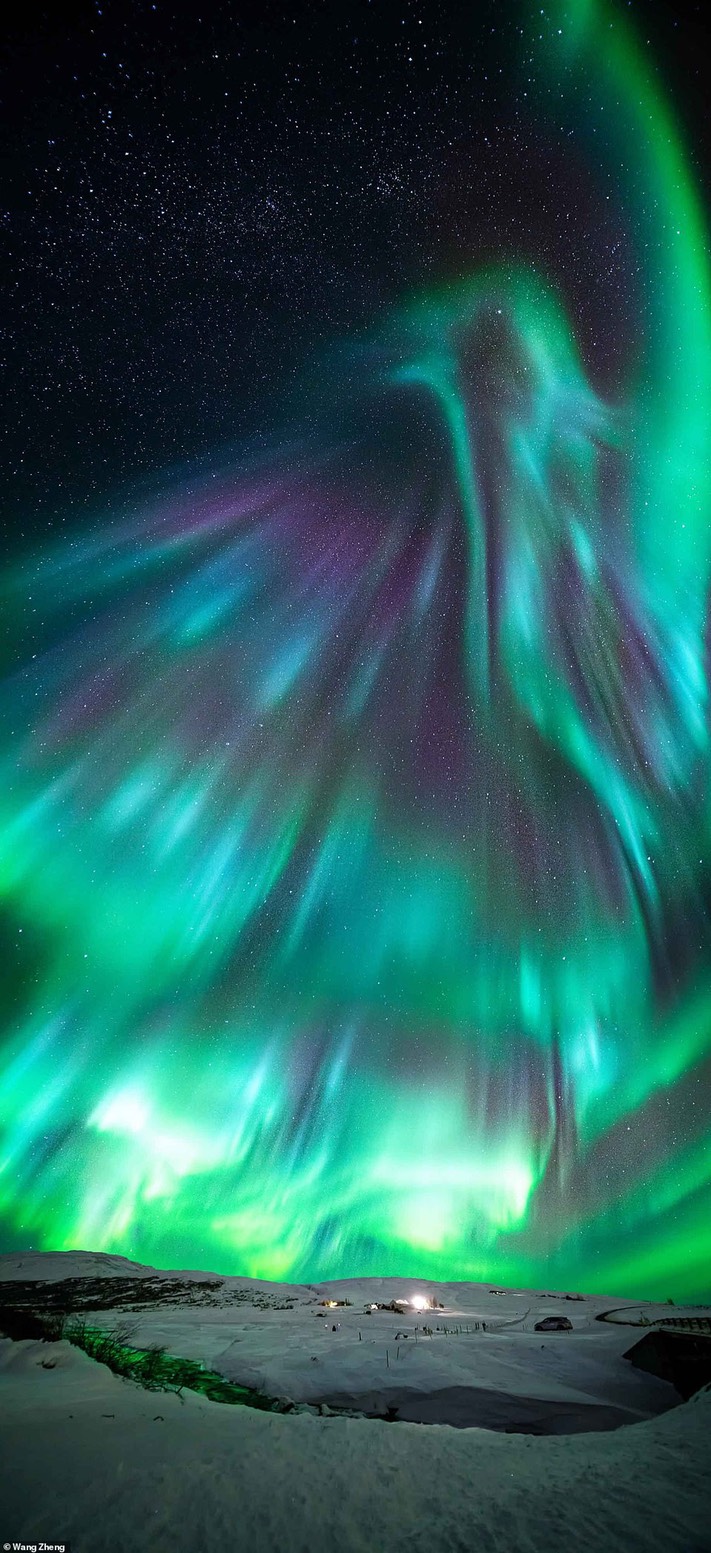
In another picture taken by Wang Zheng, an aurora takes the shape of a phoenix. They light up when electrically charged particles from the sun enter the Earth's atmosphere. Usually the particles, sometimes referred to as a solar storm, are deflected by Earth's magnetic field. But during stronger storms they enter the atmosphere and collide with gas particles, including hydrogen and helium. These collisions emit light. Auroral displays appear in many colours although pale green and pink are common. Zheng took this snap in the Golden Circle in Iceland on January 31, just before Chinese New Year
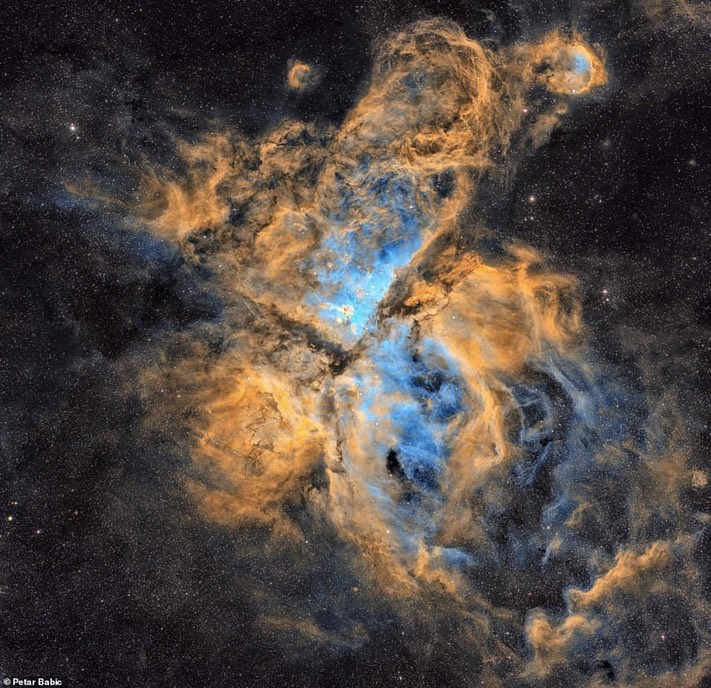
For photographer Petar Babić, from Croatia, the Carina Nebula is the most beautiful nebula in the night sky. The image showcases how extensive and colourful the Nebula really is. Using the iTelescope service he shot this picture with a monochrome camera using three different filters hydrogen alpha, OIII and SII and then, after collecting all the data, he combined those three filters into one colour image using Pixinsight. The yellows and oranges show the H-alpha and SII, and the blues show the OIII
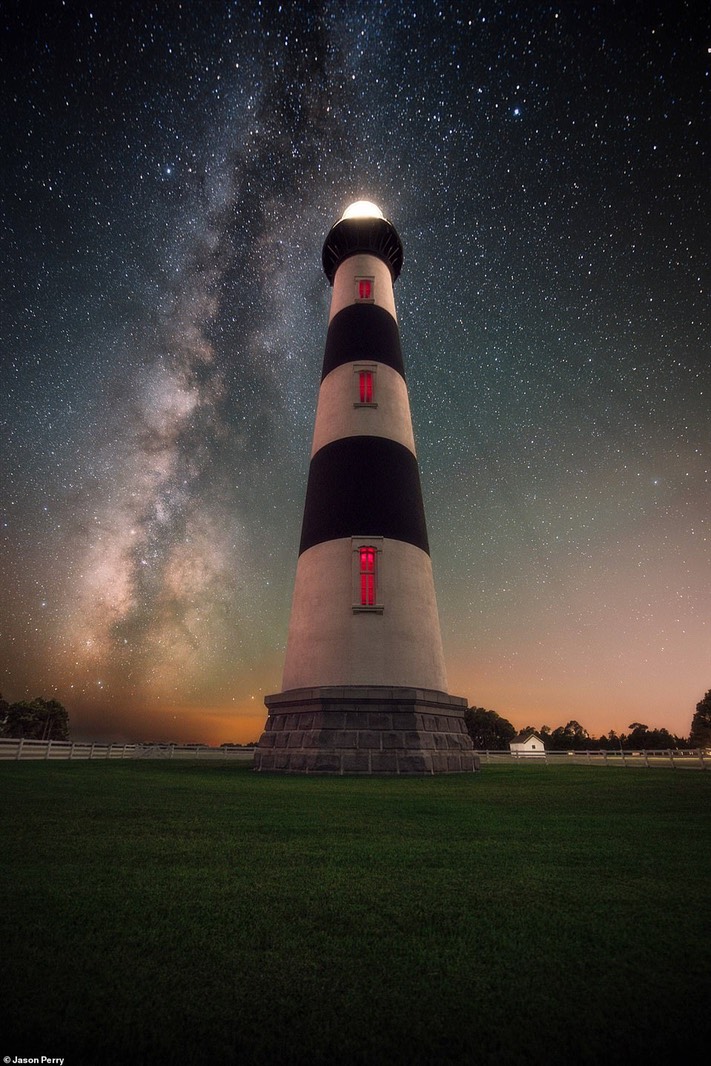
Jason Perry captured this shot of the milky way above Bodie Island Lighthouse in the Outer Banks of North Carolina using a Nikon D850 camera.
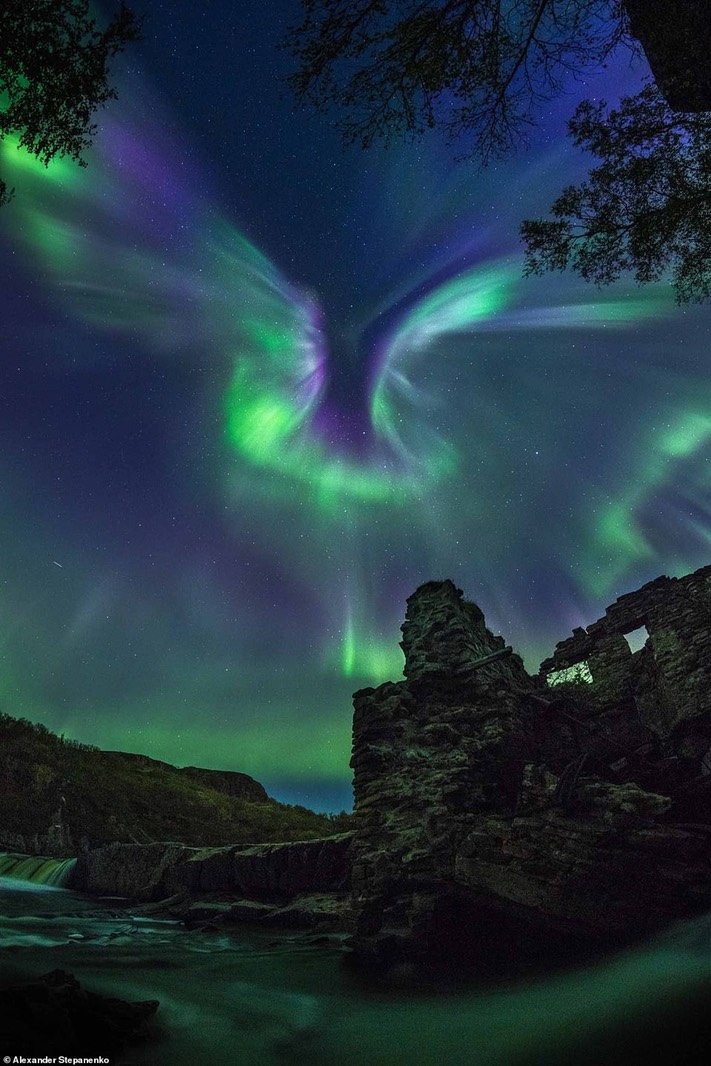
In this snap, taken by Alexander Stepanenko, this aurora is shaped like a bird and seems to be spreading its wings and flying over a destroyed military hydroelectric station in Murmansk, Russia. Mr Stepanenko has visited this location several times over the years trying to photograph the aurora flaring over the old station. In September 2018 the photographer returned and managed to capture this magnificent shot.
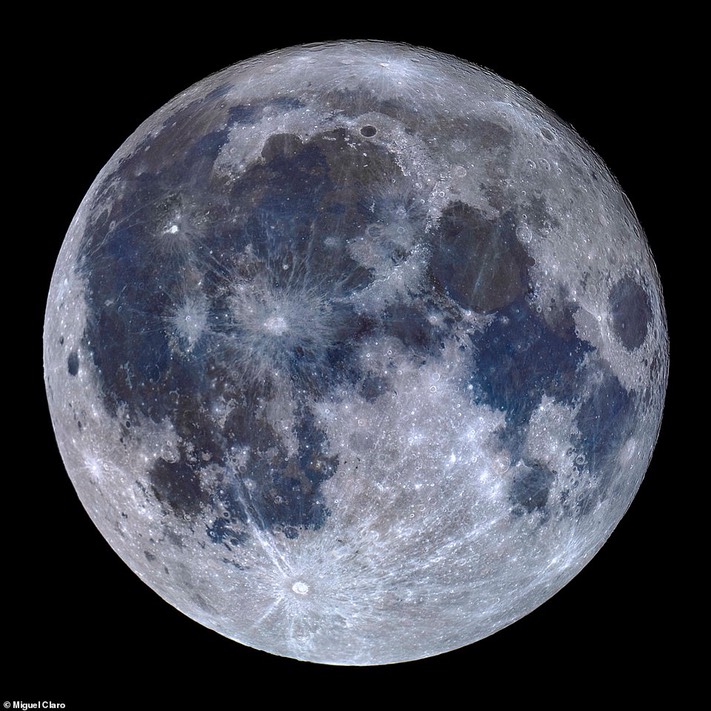
Miguel Claro, who is based in Lisbon, Portugal, created this incredibly detailed image of the moon's surface by stitching together four panels, each composed of 30 photographs. He took the pictures at the Cumeada Observatory in the south of Portugal.
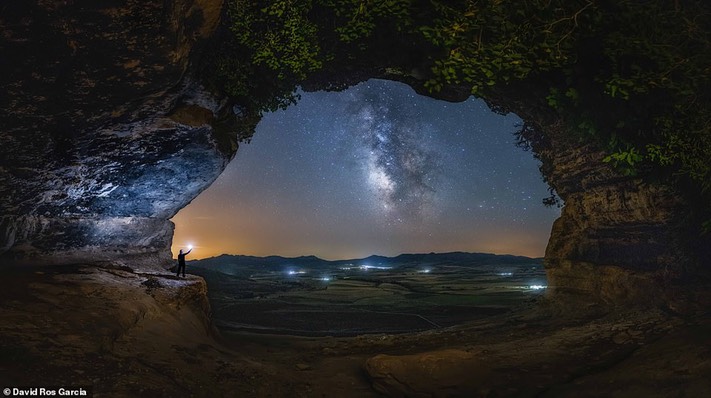
David Ros Garcia took this shot in the caves of Zaén. With this image the photographer wanted to establish a link between nature, the universe and humanity through dark and light.
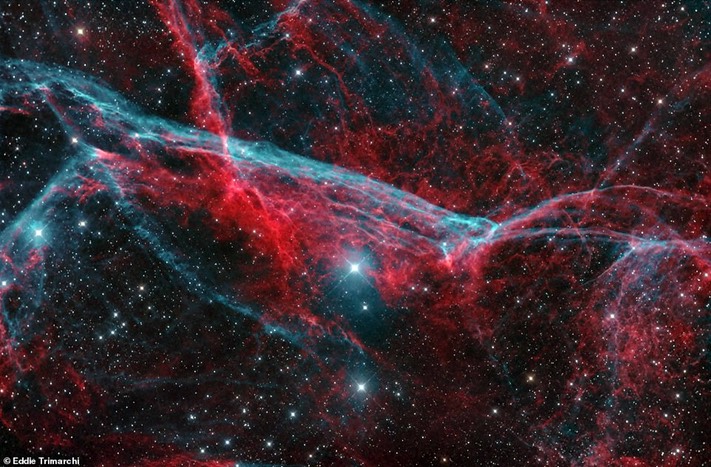
The Gum Nebula or Gum 12 is an emission nebula that extends 36° across the night sky and is actually the very large Vela supernova remnant. It mainly consists of red hydrogen and blue doubly ionized oxygen. Eddie Trimarchi took this picture in Biggera Waters, Australia.
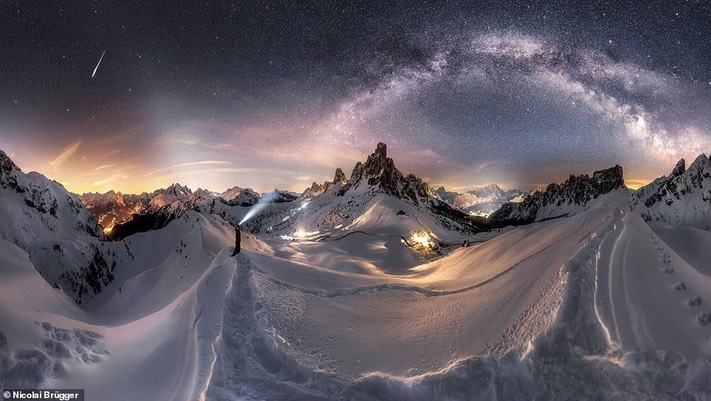
The Milky Way is stretching over the splendid Dolomites dressed in white in this photo by Nicolai Brugger. The photographer shot the foreground at 7pm in good blue hour and took many vertical images. The Milky Way was captured at 5.30am the next morning at the exact same position. The photographer composed this panorama using many vertical shots so the foreground and the comet would be perfectly lit